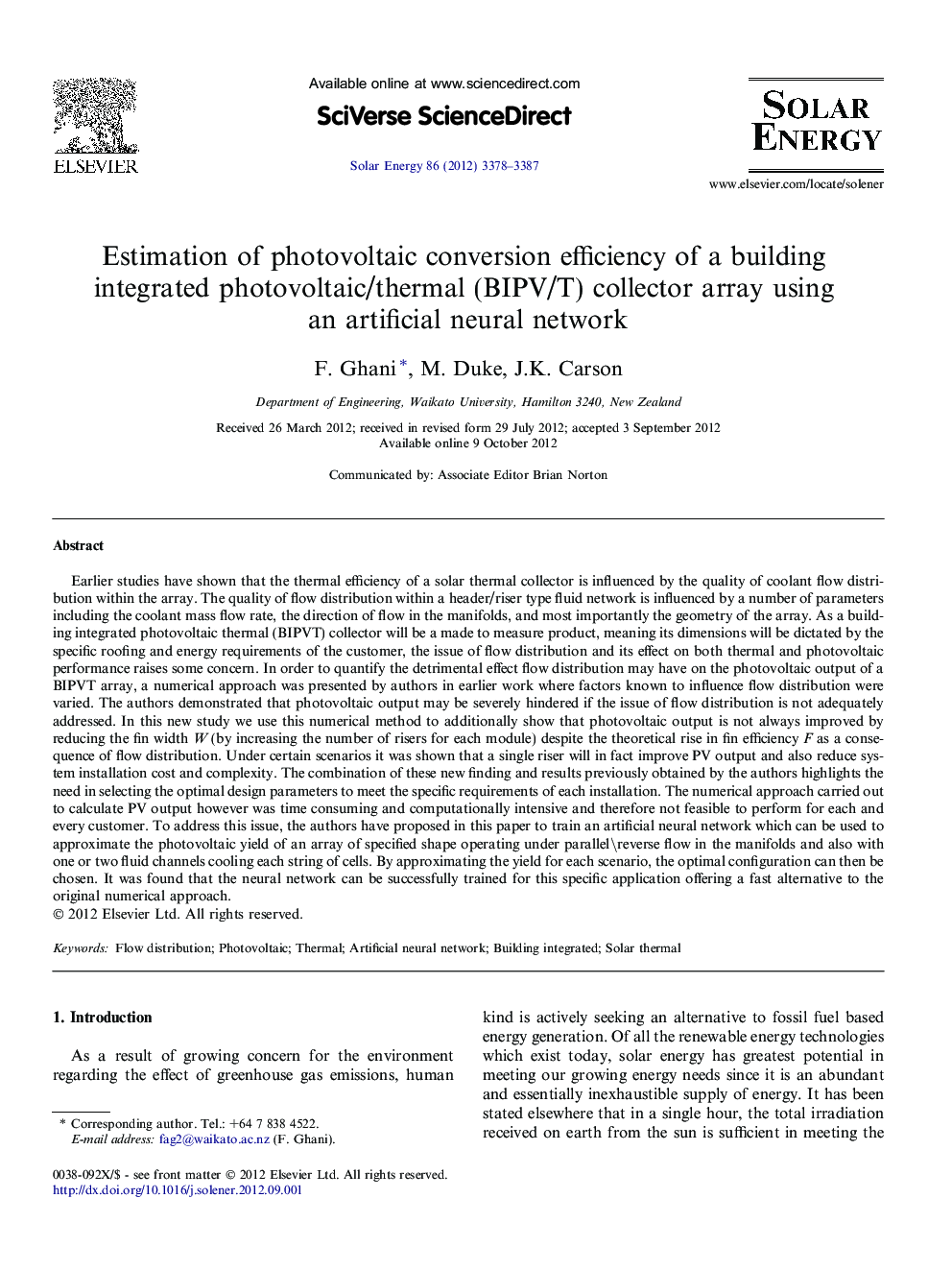| Article ID | Journal | Published Year | Pages | File Type |
|---|---|---|---|---|
| 1550815 | Solar Energy | 2012 | 10 Pages |
Earlier studies have shown that the thermal efficiency of a solar thermal collector is influenced by the quality of coolant flow distribution within the array. The quality of flow distribution within a header/riser type fluid network is influenced by a number of parameters including the coolant mass flow rate, the direction of flow in the manifolds, and most importantly the geometry of the array. As a building integrated photovoltaic thermal (BIPVT) collector will be a made to measure product, meaning its dimensions will be dictated by the specific roofing and energy requirements of the customer, the issue of flow distribution and its effect on both thermal and photovoltaic performance raises some concern. In order to quantify the detrimental effect flow distribution may have on the photovoltaic output of a BIPVT array, a numerical approach was presented by authors in earlier work where factors known to influence flow distribution were varied. The authors demonstrated that photovoltaic output may be severely hindered if the issue of flow distribution is not adequately addressed. In this new study we use this numerical method to additionally show that photovoltaic output is not always improved by reducing the fin width W (by increasing the number of risers for each module) despite the theoretical rise in fin efficiency F as a consequence of flow distribution. Under certain scenarios it was shown that a single riser will in fact improve PV output and also reduce system installation cost and complexity. The combination of these new finding and results previously obtained by the authors highlights the need in selecting the optimal design parameters to meet the specific requirements of each installation. The numerical approach carried out to calculate PV output however was time consuming and computationally intensive and therefore not feasible to perform for each and every customer. To address this issue, the authors have proposed in this paper to train an artificial neural network which can be used to approximate the photovoltaic yield of an array of specified shape operating under parallel⧹⧹reverse flow in the manifolds and also with one or two fluid channels cooling each string of cells. By approximating the yield for each scenario, the optimal configuration can then be chosen. It was found that the neural network can be successfully trained for this specific application offering a fast alternative to the original numerical approach.
► Flow distribution within a PV/T collector shown to effect PV performance. ► Two risers does not always improve PV yield over single riser. ► Neural network developed to approximate PV yield of various BIPV/T arrays. ► Neural network can be used as a tool to determine optimal flow configuration. ► Offers a fast and economical method to determine ideal flow configuration.
